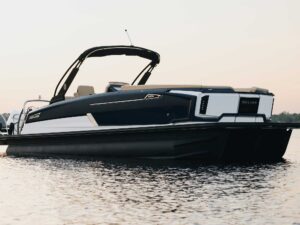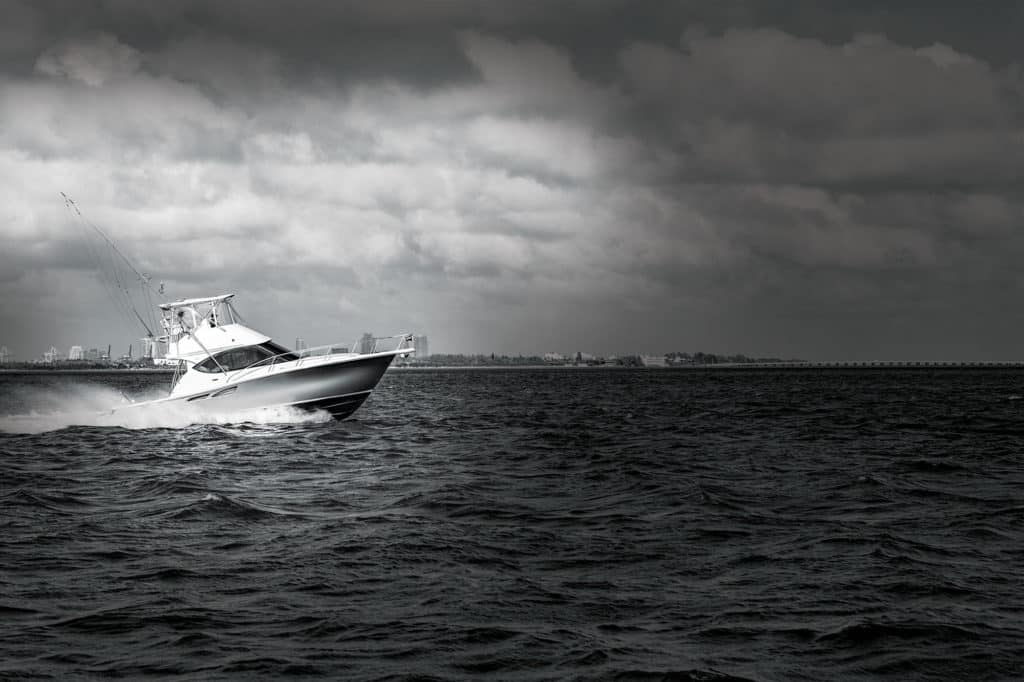
It was just an old plywood boat.
A ’75 Johnson with electric choke.
A young boy, two hands on the wheel.
I can’t forget the way it made me feel.
Those are my favorite words in Alan Jackson’s ballad “Drive.” It poignantly records the moment in boating that imprints the experience permanently in boaters’ must-do-it brain sector. I remember my first boating experience exactly that way.
My first boat ride, in a 15-foot Starcraft, infected me with the boating bug at age 10. But 30 years ago, the infection went airborne the first time I rode on the flying bridge of an Islamorada sport-fisher. From the bridge, I could spot fish invisible to the crew in the cockpit. A sea turtle passed below, rounding a coral head in 30 feet of water.
Everywhere I looked, the navigable water was topaz, and the passages between coral and sandbars were as evident as if a chart was laid across the sea.
No, I never bought a boat with a flying bridge, but I never lost the appetite to have one, and I’ve been fortunate enough to have a lot of experience aboard them over the years.
Their advantages are compelling, but they don’t come without some liabilities either. Here, then, are all the reasons to love a flybridge boat.
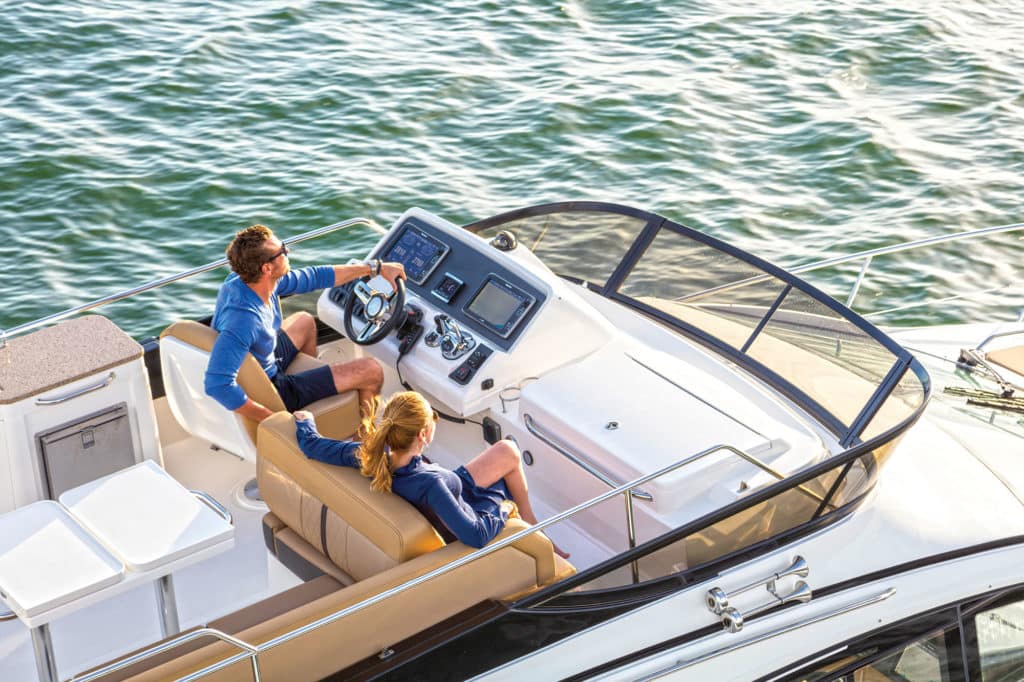
Visual Assets
I liked hanging around the docks long before I had a boat. I still enjoy it, though not quite as much as piloting my own vessel. Once while at the dock, I watched as a captain came into a narrow port and aimed his bow at the slip. Just short of the slip, he turned his back to the helm. Standing between the throttles, he took one in each hand, and pulled one up to forward at a pretty strong idle and pushed the other to reverse with equal authority. Completely confident, from both practice and the clear view of other boats and dock fingers, he pivoted his beauty 180 degrees, then nonchalantly reversed throttle positions, stopped the pivot and aimed the stern straight into the slip. Just as the lacquered mahogany transom might have struck the dock, he applied forward thrust, and water boiled up between the stern and dock, stopping the vessel perfectly, just inches from the pier. Dock hands threw lines on the cleats, and the boat was made fast.
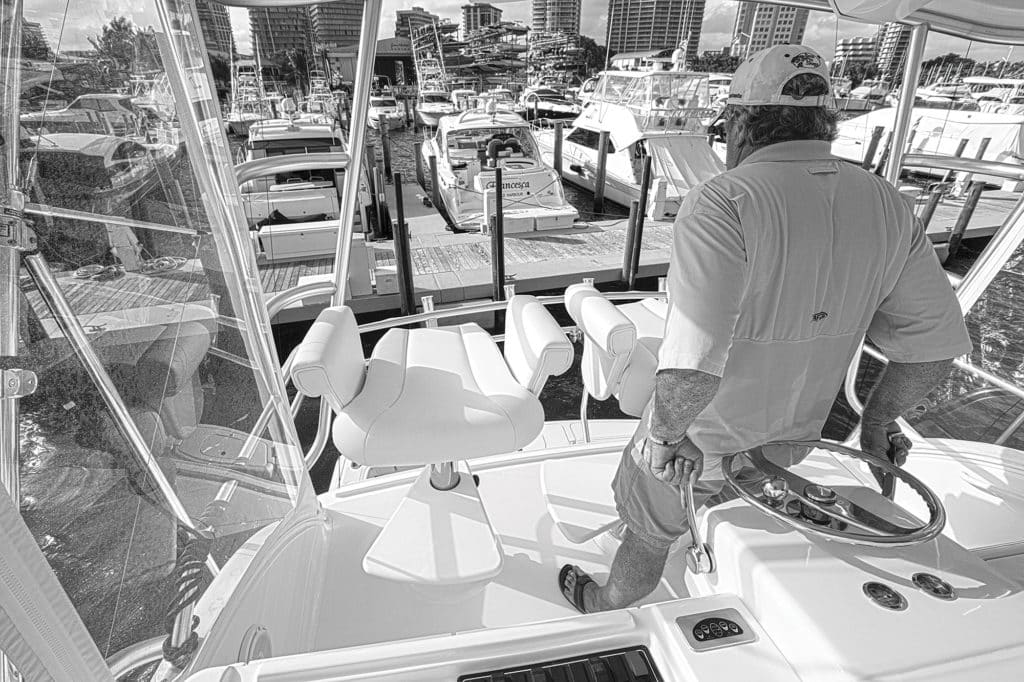
Climbing Liabilities
That skipper had a crew awaiting him on the dock. Had he not, at least six steps stood between him and his dock lines. As the boat idled there, technically still underway as the rules of navigation go, he could drift into other boats in the marina. The skipper in a flybridge had better be sure-footed or have a crew (or a remote control or a lower station to transfer to). With a crew, the upper station becomes an asset again, because he can assign tasks and observe his crew as they secure the boat. Likewise, upper stations are not for the long-in-the-tooth commanders who may not have that youthful spring in their step.
Area Assets
The only thing better than enjoying the view from above is sharing it. That upper station supplies extra seating, and the social opportunities it provides are at least charming — if not romantic with the right passengers. Often, if the vessel is large enough to carry it, an upper station can have an electric refrigerator or at least an ice chest, and some boast a cocktail galley with a sink.
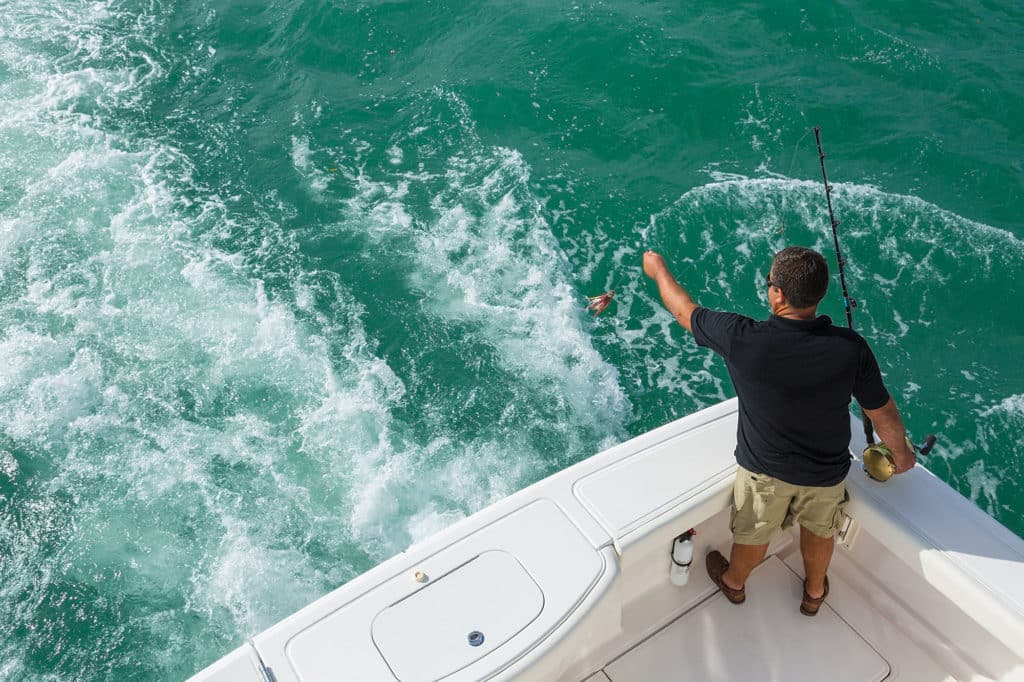
Access Liability
You have to climb to the bridge in a convertible or flybridge, and that requires stairs or a ladder that takes up space in the cockpit below. Sometimes that loss of space is substantial, crowding the gathering area. Even a ladder to the bridge creates inconveniences in that gathering space. And some skippers prefer having all the action on the main deck rather than dividing the socializing crew between upper and lower decks.
Lofty Assets
It’s the best place to grab some rays and feel the breeze, whether stirred by nature or by throttle. You’ll look very smart up there too, giving the boater’s wave from that lofty perch. And as the skipper, your crew will compete for your company, giving plenty of opportunity for more intimate conversation.
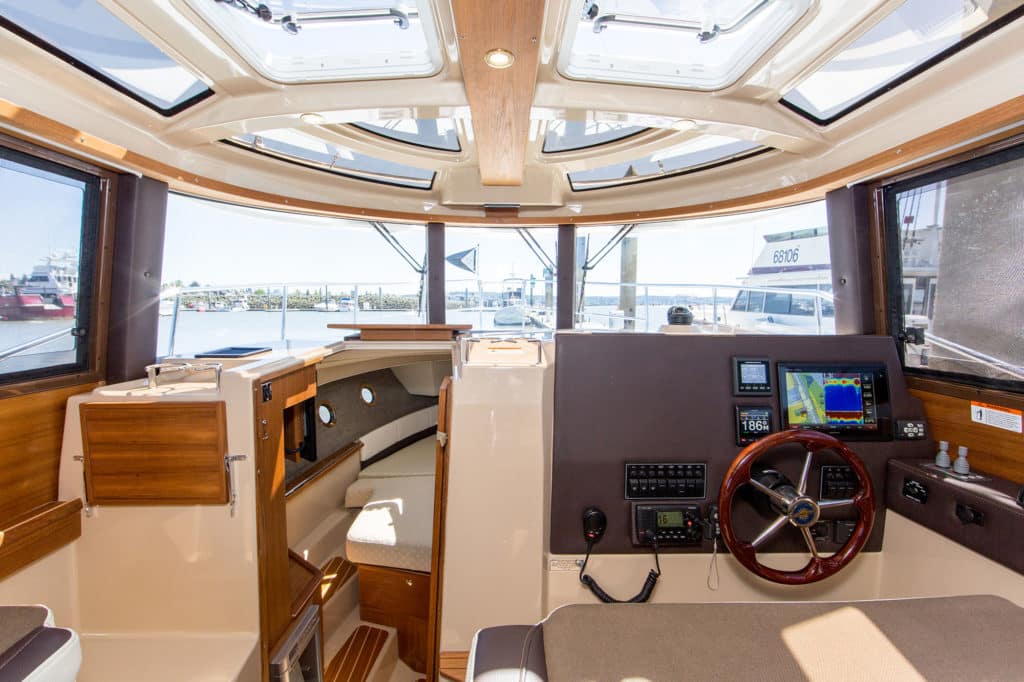
Lofty Liabilities
That added height can cost you some waterway access and even storage fees — especially if you dry-stack your boat when it’s not in use. Dry-stack marinas charge by length and by height. So, be sure of the storage fees before you buy. Further, that added height means waiting for drawbridges or being unable to gain passage beneath fixed bridges to certain waters altogether. Will it be worth it? It’s up to each individual boater.
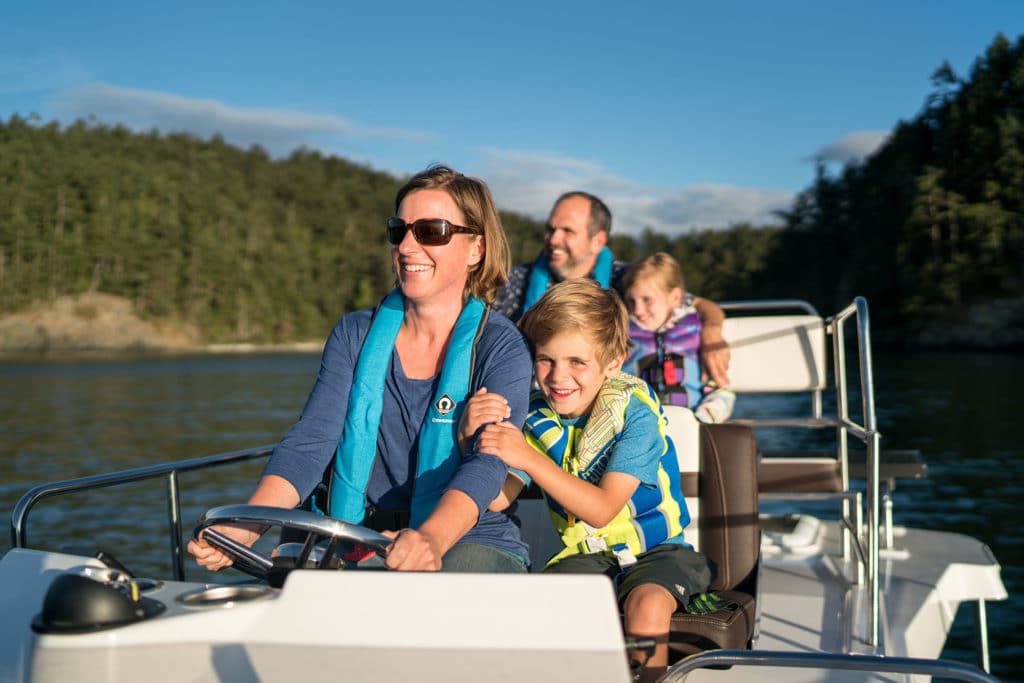
Cash Assets
Expect that upper station to cost between $25,000 and $75,000 depending on the boat and the accommodations included above. On some boats, an upper station can make them resell faster and sometimes for a higher price than without one. That is particularly so if the boat’s upper station isn’t the sole station. That higher resale price, though, may be offset by the cost of maintaining helm hydraulics, throttle and shift controls, and navigation equipment in both stations.
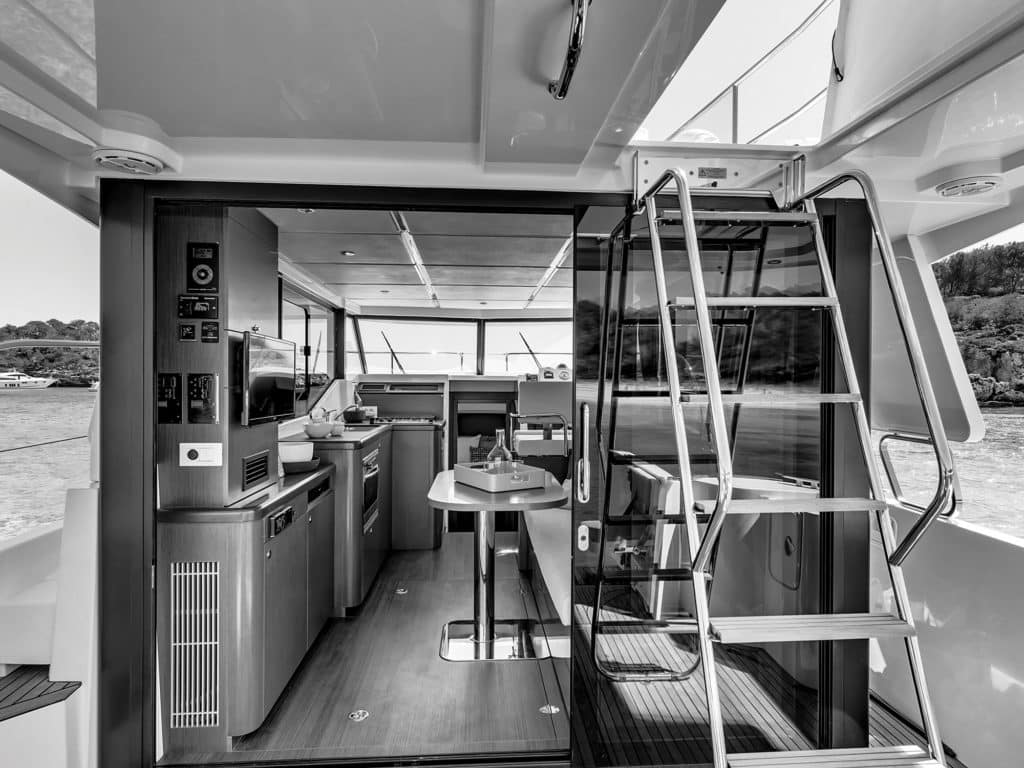
Stormy Liabilities
On a beautiful day, nothing is better than skippering from above. On a stormy day, nothing is worse. An upper station is high above the vessel’s center of gravity, and the only thing worse than lunging forward through rough seas is wobbling sideways through them with each wave attempting to slingshot you abeam. Trying to come through a sloppy inlet in stormy weather will make you kick yourself for not investing in a second lower station.
Read Next: Six Amazing Hull Designs!
You’ll find lots of options in flybridge boats and designs for many tastes and wallets. The designs range from pocket trawlers to luxury cruisers and sport-fishers. Here are some top examples, along with some assets and some — let’s just call them trade-offs — in the bargain.
The Future of Flying: Five Modern Flybridge Boats
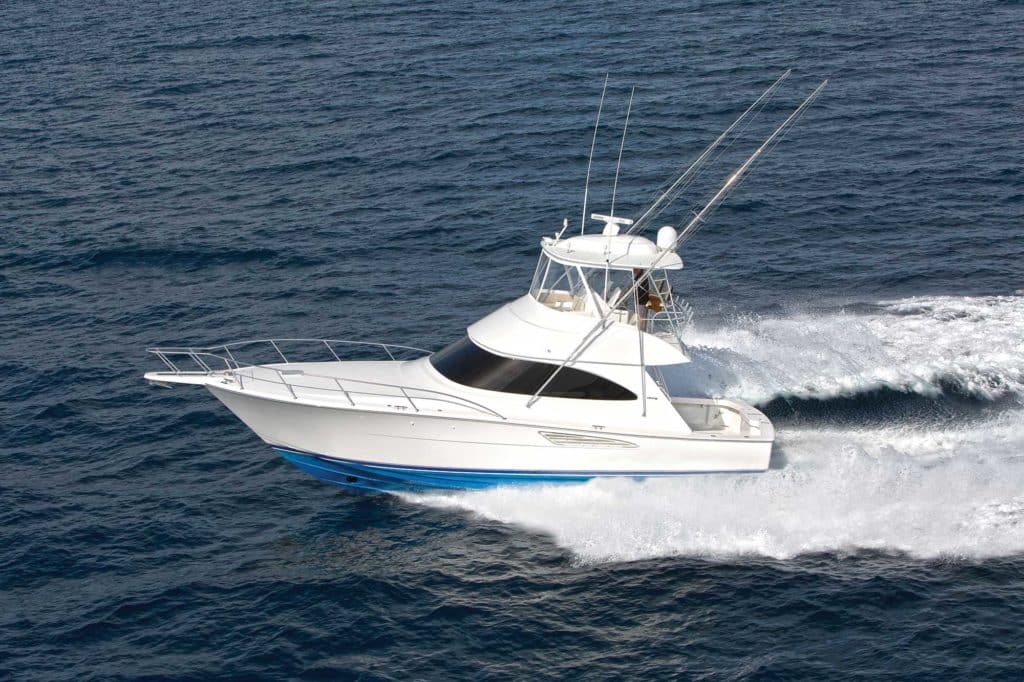
Viking 44C
It’s unclear who built the first flybridge, but it’s easy to argue sport-fishing convertibles would be among the first. Nobody benefits from that lofty view like fishermen. In fact, Viking doesn’t offer the 44C with a lower helm, which perfectly illustrates an angler’s commitment to that view. Viking will protect the bridge with acrylic side curtains, and when air conditioning and heating are added, there’s no weather short of rough seas to keep you from having fun.
We’ve already discussed the docking advantages, and no offshore skipper is going to wink at a 20-minute wait for a bridge — he’ll just get his crew up that much earlier. Because offshore anglers are long-range fishermen, the Viking 44CC doesn’t pull punches on comfortable accommodations. Two main staterooms offer queen beds, and the amidships berth includes a private head. Add a single bunk forward and convertible settees, and there is plenty of sleeping space on board for comfort.
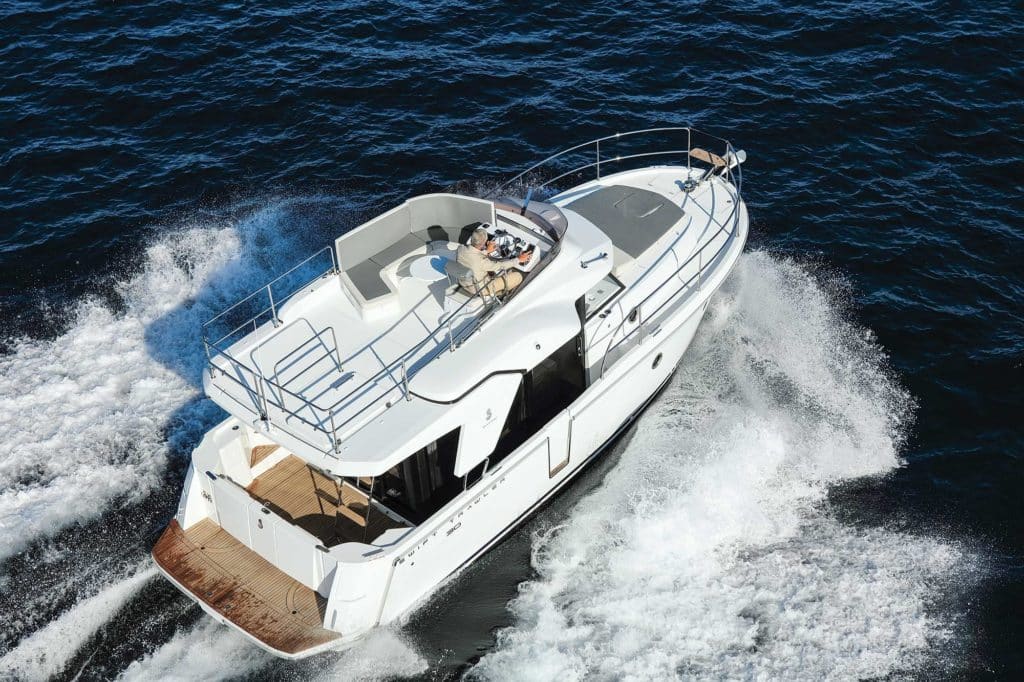
Beneteau Swift Trawler 30
Beneteau proves you don’t have to go large to get the fun of a flybridge. Its Swift Trawler is a semidisplacement hull capable of exceeding 30 mph. Its fuel capacity gives a range beyond most owners’ expectations. The easy-to-handle, compact trawler is a true voyager for a jaunt to Block Island, or even crossing from Miami to tour the Bahamas.
The boatbuilder wisely makes standard both an upper and lower station, which means a short crew, or even a single-handed skipper at the lower helm, can dock and secure the vessel at port. Also standard is a Volvo Penta D6 370 hp engine, powerful, fuel efficient, and ready for reliable long-range cruising or just weekend overnighting at a quiet anchorage.
Access to the bridge is via a ladder-way through an upper-deck hatch. The landing below does take cockpit space, but Beneteau compensates by opening the cockpit to the salon via a large sliding door. The effect is attractive and practical, and cruisers won’t regret the trade-offs.
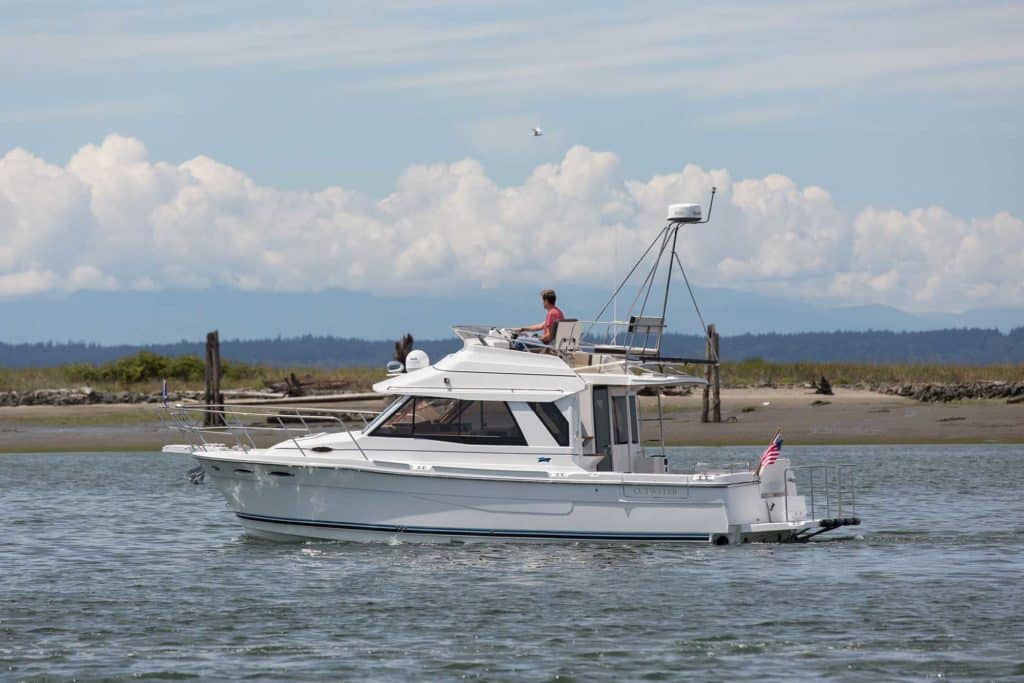
Cutwater C-30 CB
The C-30 with command bridge integrates the boarding steps into the pilothouse design by leaning them over the portside galley underneath, where headroom isn’t an issue. The effect clears the deck below for open seating and eliminates the steps from the overall deck plan. The steps are enclosed on both sides, enhancing secure footing, plus the aesthetic treatment is practical and good-looking, keeping the steps hidden from the Cutwater’s profile view.
Once above, there is a dual helm seat and a companion settee behind it for up to four passengers plus the skipper. Cutwater is just as generous below, providing a bridge with a dual seat, but it lacks the access hatch advanced by the Beneteau.
Living accommodations are treated with hardwood and fine veneer, giving a rich interior that’s durable with long-lasting good looks.
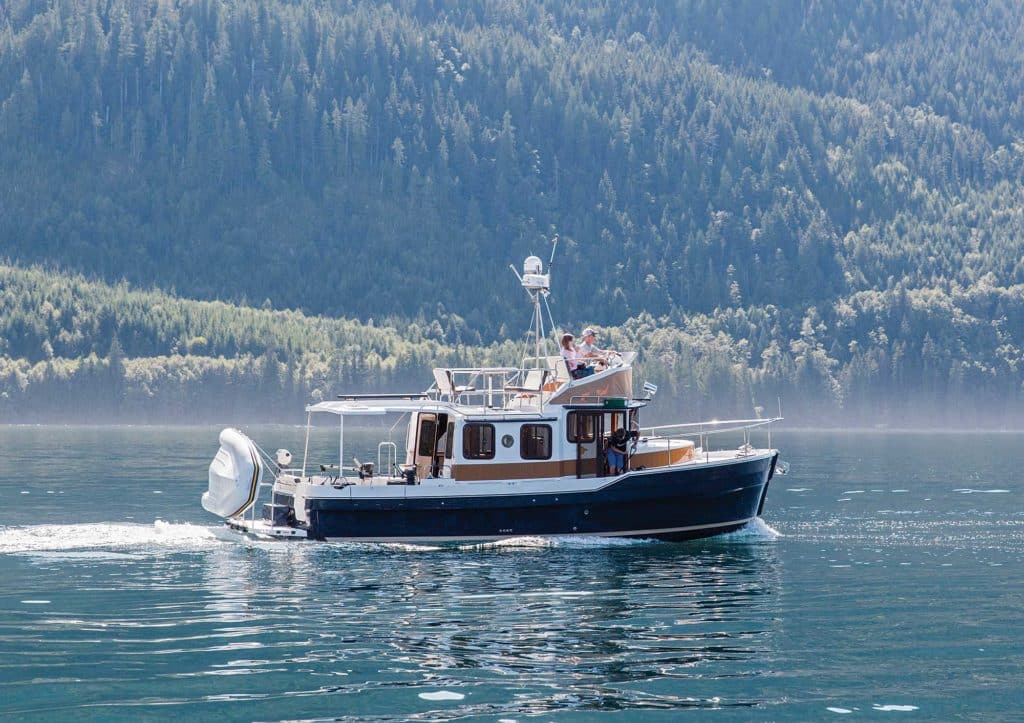
Ranger Tugs R-31 CB
The tug-style mini-trawler is semidisplacement and can actually cruise along at a good clip, making the top-deck view both exciting and useful for navigating tricky waters. Ranger Tugs has expertly turned this boat into a cozy overnighter with a sleeping berth and galley dinette that converts to a berth. The lower station is standard on the starboard-side of the salon, and even more important to journeyers, it offers a full doorway from the helm to the deck, making it easy to grab a line or offer one to the dock hand. In addition, a wide walkway around the pilothouse has a handy grab rail for safely moving about the deck to secure the boat in port and at anchor. The R-31 is responsive to low horsepower, has fuel-sipping diesel propulsion options, and offers a diesel generator, eliminating both the high risk of carbon monoxide and the need to carry gasoline in addition to diesel fuel. Topside amenities include a dual helm seat and a dinette with facing lounges — picture lunch up top with your crew.
Ranger Tugs are built in the Northeast to handle any rugged waters.
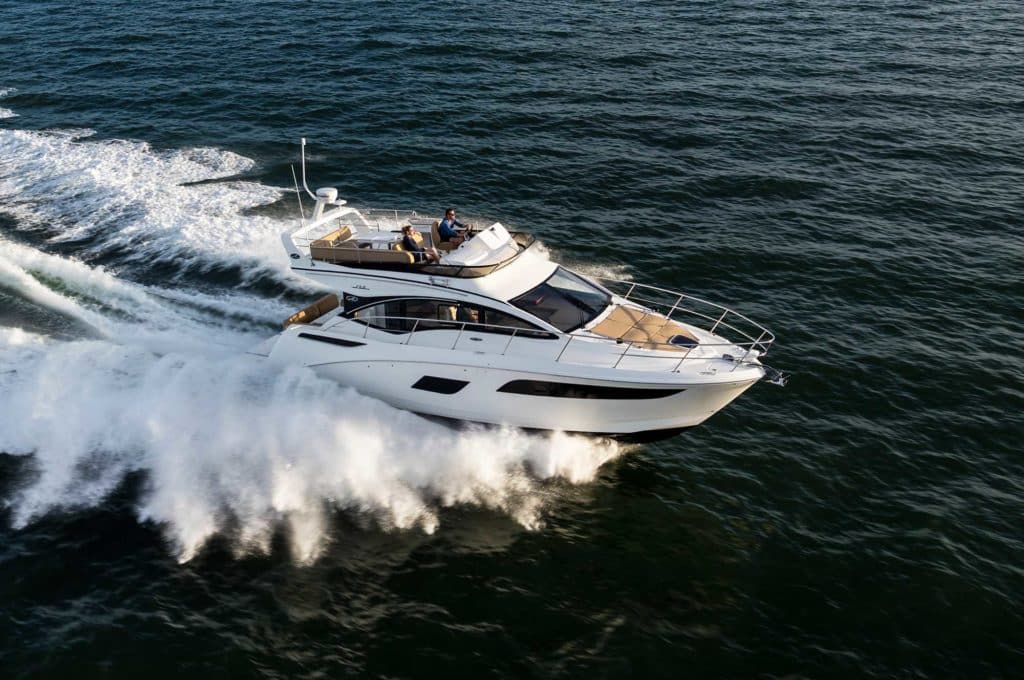
Sea Ray Fly 400
Dual stations in the Fly 400 give complete versatility to the skipper and allow his crew to enjoy boating in temperate weather on the roomy bridge above or in chilly weather in the sumptuous salon below. Steps to the bridge are carved from the aft cockpit but offer a less athletic climb to the upper deck, and the generous beam accommodates the structure while still leaving enjoyable cockpit space with a built-in lounge and table. There’s something to be said for a 40-footer.
Once above, the crew is treated to a large L-shaped lounge that wraps around from starboard to stern, and a dual lounge facing forward next to the helm seat adds more seating to total at least eight coveted spots.
Sea Ray is known for luxurious appointments, hardwood and quality vinyl, and all those treatments are apparent in the master stateroom and the astonishingly large amidships cabin.

